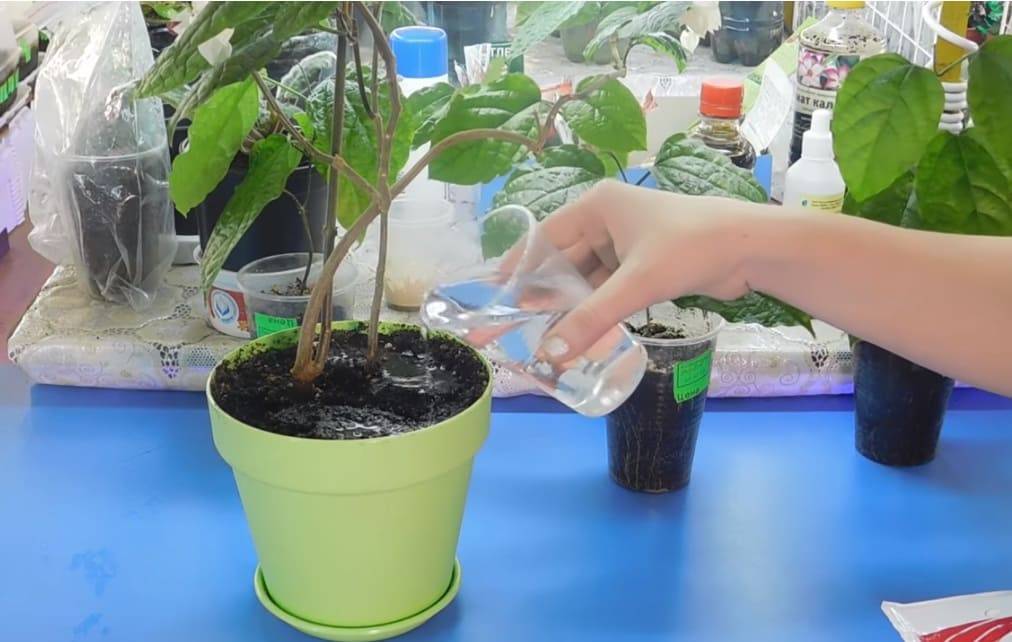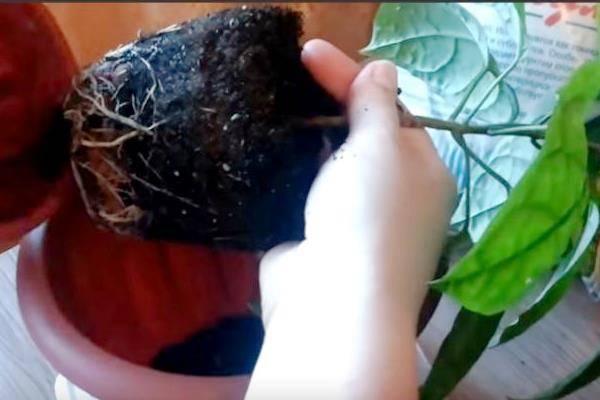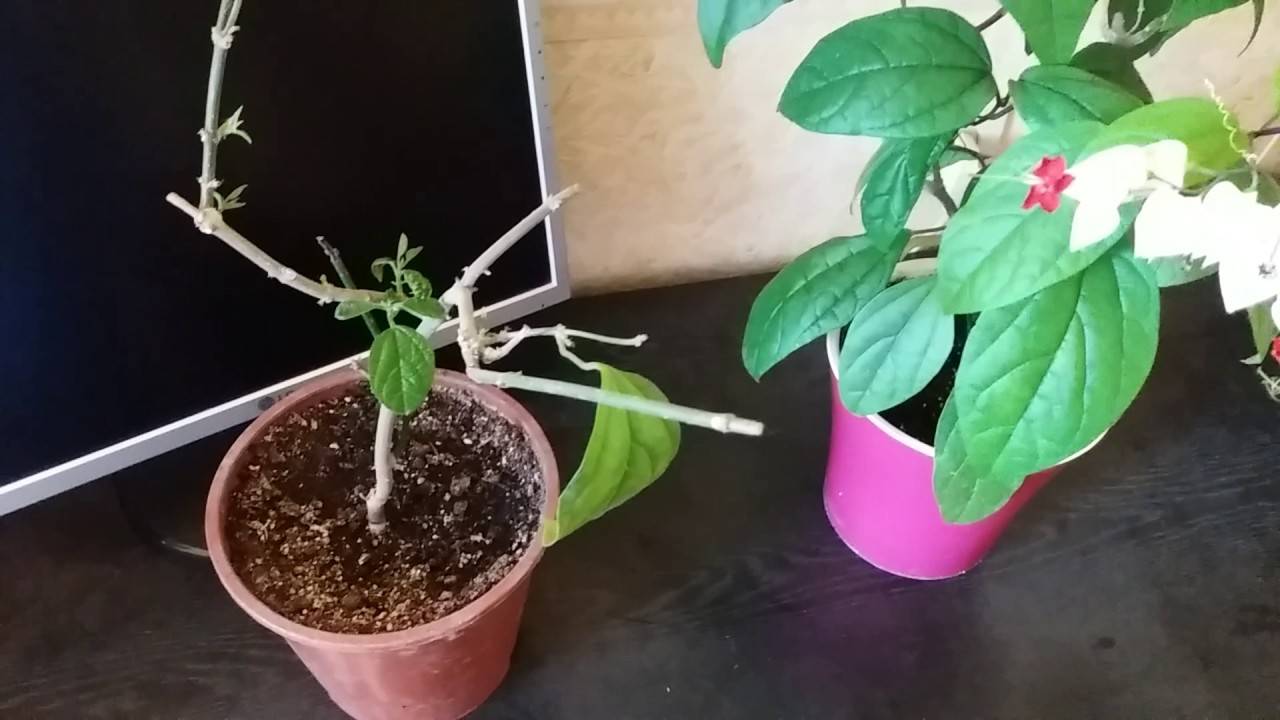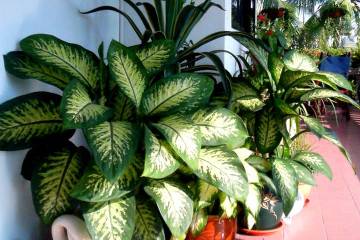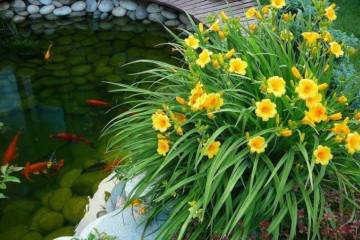Why do Clerodendrum leaves turn yellow and fall
Content:
Clerodendrum Thomsoniae or Prospero are common flowers in many homes. A pleasant aroma, which exudes not only flowers, but also leaves, makes the culture attractive to many flower growers. But their happiness is overshadowed by yellowing and falling leaves. However, this only occurs during the dormant period, which is 2 months.
Description of the flower and its care
Thomson's Clerodendrum, or Prospero, is considered unpretentious plants, but in order for them to form inflorescences, you need to know certain rules for caring for them. There are not so many points worth memorizing, the most basic is the need to create certain conditions during the dormant period of the flower.
Clerodendrum is a perennial ligneous vine belonging to the Verbenaceae family. Branched shoots can reach a length of 4 m. Leaves are simple, dark green. At the tops of the shoots, paniculate inflorescences of small flowers bloom. The size of the bowl reaches 2.5 cm.
If Prospero's clerodendrum appears in the apartment, home care should be of high quality in order to wait for flowering. You need to know certain rules and tricks that will help keep the flower healthy.
Watering
During flowering and active growth, it is recommended to water the plant with plenty of soft and well-settled water. It should be warm. If taken from the tap, it must be passed through a filter. The intervals between watering are individual in each case. It is necessary to look at the state of the substrate: if the top layer is dry, then it is worth watering the flower.
Top dressing
For healthy growth, it is recommended to fertilize the substrate from time to time. They are combined with watering so as not to burn the root system. They should be held from April to August, and stop during the rest period. Top dressing are complex preparations with a high phosphorus content. They are most often sold in specialized stores in liquid form.
Why does clerodendrum not bloom?
Novice growers may not know why Thompson's clerodendrum does not bloom. Most often, the reason lies in the improper wintering of the plant. If you take care of it correctly, following certain recommendations, such a misfortune will not happen.
Difficulties of home care
If the vine has already dropped its leaves, it does not need additional air humidification. In the autumn-winter period, when the flower is at rest, it is worth maintaining the air temperature in the room at about 15 ° C. At this time, the plant may shed its leaves, this should not be feared.
Diffused lighting is important for clerodendrum both during flowering and dormancy. In autumn and winter, you can take the flower to a darker room, and in summer and spring it should be transferred to a lighter one.
What can be done
If flowering is not observed, it is worth knowing what can be done to make the clerodendrum bloom. First of all, it is worthwhile to properly organize its wintering: reduce the amount of watering and reduce the air temperature. But this should be done gradually immediately after the end of the previous flowering. Watering is necessary so that the plant does not dry out. Most often, this period lasts about 1-2 months. If the flower has begun to release shoots, it is required to increase the number of watering, transfer it to its usual place and begin to introduce fertilizers into the soil.
Transfer
Often a transplant is required for the flowering of Clerodendrum. The soil must be nutritious, and therefore it is worth monitoring its chemical composition. Before transplanting, it is required to disinfect the new substrate. To do this, you can use the oven or microwave.
The new container should be 2 cm taller and wider in diameter than the previous one. At the bottom, it is necessary to lay out 2-3 cm of drainage, carefully transfer the plant, trying not to damage the root system. It is necessary to fill the voids in the pot with new substrate and water the flower.
How to create conditions for lush bloom
If the florist once sees how the clerodendrum begins to bloom, he will want to subsequently refresh his impressions. For these purposes, it is worth learning how to properly care for a flower during this period. Diffused bright light is the most optimal illumination. The air temperature in summer should be in the range from 18 ° С to 25 ° С. It is also worth regularly spraying the flower, thereby increasing the humidity of the air.
Clerodendrum: how to make bloom
If the house has a capricious clerodendrum, how to make it bloom is required to be known to the household. If flowering does not start, it is recommended to do the following:
- Take out the flower pot in a cool room for 2-3 weeks in the spring.
- At the end of this period, cut off the shoots.
- Transplant into new soil.
Pruning clerodendrum should be done correctly, otherwise you can deprive yourself of the opportunity to observe their flower inflorescences.
Why do Clerodendrum leaves turn yellow and fall
Yellowing of the leaves is one of the most common plant problems. If only the lower parts of the flower are affected, then there is no need to worry, since this is a natural situation and thus the old greenery gets rid of.
Leaves can turn yellow in different parts, and this is worth paying close attention to in order to understand what is the reason for this phenomenon:
- yellowing of the edges of the leaves means the death of the root;
- the appearance of yellow-brown spots can be expected after prolonged exposure to direct sunlight;
- if the leaves of the clerodendrum brighten, then this means the presence of pests on the flower;
- the leaf may turn yellow along the central part, this is due to an overabundance or lack of mineral elements;
- the appearance of small spots on the entire surface of the leaf indicates the presence of fungal infections and other diseases.
There are many reasons why clerodendrum leaves can turn yellow and fall off. The main ones are considered to be improper watering, a small pot for the root system of the clerodendrum. Watering too often or too much can cause the water to stagnate, which can also adversely affect the health of the plant.
Correct pruning of clerodendrum
How you can cut a clerodendrum, every florist who has this plant in the house should know. There are 2 types of trimming:
- sanitary;
- formative.
The first is done with the aim of cutting off dry, diseased or damaged shoots, the second - to create a certain shape of the bush. This requires greatly shortening the shoots in order to stimulate their branching. A stem tree can be obtained by cutting off all but the strongest shoots (its height should be about 70 cm). The apical shoots should be pinched to form the crown.
A beautiful flower attracts attention not only with its appearance, but also with a pleasant aroma that comes from the flowers and leaves of the plant. Unpretentious care makes clerodendrum a welcome guest in every apartment.

